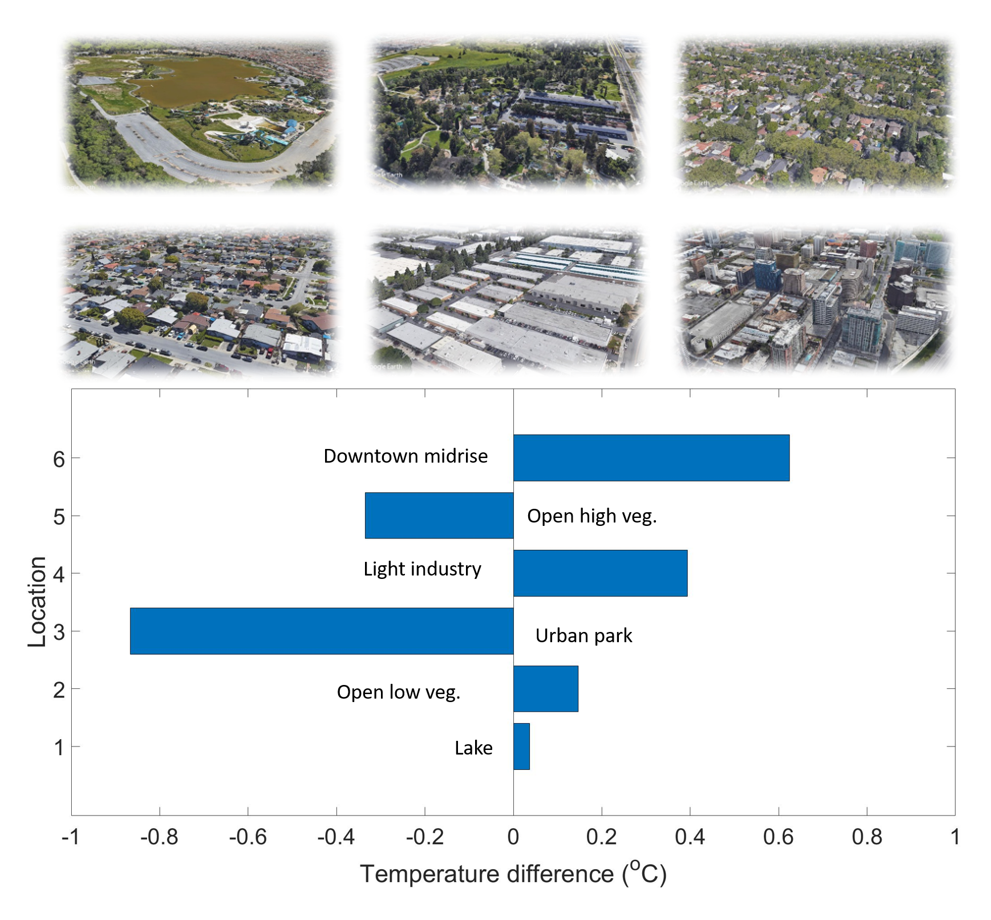Impact of the Built Environment on Microclimate in San Jose, California

Abstract
Most cities have heterogeneous land uses, which produce internal variability in the Urban Heat Island (UHI). Urban heating coupled with rising global temperatures leads to an increase in heat-related illnesses, decrease in human comfort and increase in energy consumption. This study investigates the spatial variability of the UHI at the neighborhood scale in San José, California using a mobile transect to measure temperature differences. Sampling sites were classified into Local Climate Zones (LCZ) based on vegetation, impervious fractions, and building morphology. Average evening temperature differences were 1.5 °C warmer downtown than an urban park and 0.5 °C cooler in a well vegetated neighborhood compared to neighborhood with similar built urban form, but different amounts of vegetation. Stronger wind speeds decreased temperatures differences between LCZs. Results are consistent with theory that vegetation provides cooling via evapotranspiration and that increases in the built urban form lead to increases in temperature. LCZs with increased impervious and building surface fractions experienced increased temperatures whereas LCZs with increased pervious fractions experienced cooler temperatures.